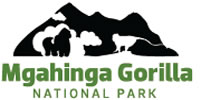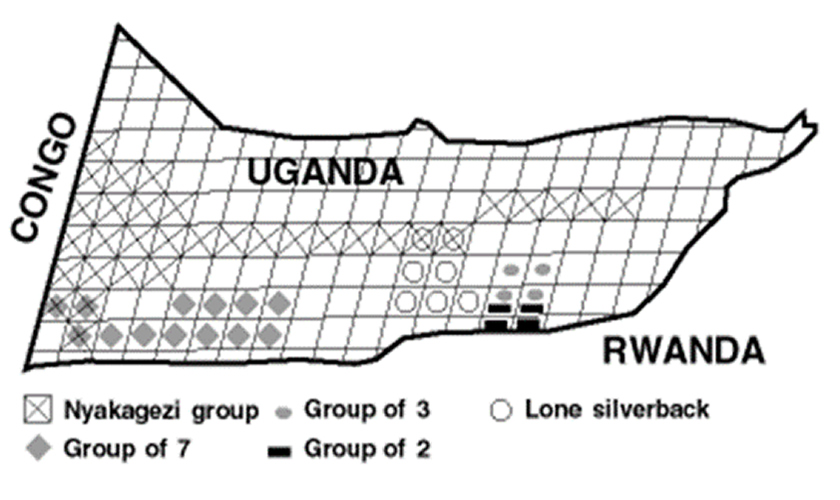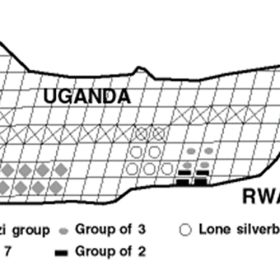A survey is complete to establish the state of the gorillas in Mgahinga National Park. The aim of the survey was to determine the number of mountain gorillas that use Mgahinga Gorilla National Park, which area and which time of the year. Emphasis was laid on unhabituated groups. A team of 4 experienced rangers was deployed (not on a daily basis) to carry out monitoring of the presence or signs of any gorilla group and at the same time patrol for illegal activities. Any findings were recorded on a piece of paper including the name of the place.
This information was later plotted on a map of the park. In the second half of the monitoring period, most of the data collected also included the tourist group (Nyakagezi). There were rare sightings of wild groups.
In the second half of the study period, few observations were made compared to the first half. Dung droppings, trails, nest sites and physical sightings were recorded. The gorilla signs were noted mainly around Rugezi Swamp, Sabinyo, Gahinga, Muhavura and Kabiranyuma, near the Rwanda-Uganda border. The observations were mainly confined to Zone 1 of the park.
It was noted that only the Nyakagezi group (habituated) uses part of the formerly encroached areas in Zone 2, Nyakagezi triangle, mainly when in transit to and from the Congo. The earlier group of about 7 individuals sighted in February 1997 was not seen at all during the later part of the study. However, 4 nests were seen close to Rugezi swamp on the border to Rwanda; the nests are believed to have been made by a part of the group of 7.
The following groups were found: a group of 7, a group of 3, a group of 2, a lone gorilla and a group of 10 (Nyakagezi). The dominant male in the tourist group is constantly being challenged by a younger silverback. The dominant male has had wounds for a good period of time.
As May, June and July progressed, there were few sightings and observations due to the onset of the dry spell with parts of the Mgahinga Gorilla National Park becoming dry; this hampered the observation of signs like trails.
We strongly believe that during the study period, there were 4 gorilla groups (including the tourist group) and a lone silverback, making a total of 23 individuals.
Although it has been estimated that about 23 animals use the park, this figure may not be accurate. In the second half of the study period, the same manpower was deployed as in the first half; however, not all areas could be visited on all days in every month. This was due to the increasing activities in the park, namely research, security patrols, community liaison and tourism.
The donation by Berggorilla & Regenwald Direkthilfe of 2 pairs of binoculars was an additional incentive to the field staff, who at the moment are involved in observing and identifying birds. The jungle boots (good quality) went a long way in facilitating the field work. These boots have proved to be ideal for the rough terrain in Mgahinga Gorilla National Park.
Special thanks go to Berggorilla & Regenwald Direkthilfe who provided financial and material support and the willingness of the staff to ensure the field data collection and write-up of this report.
Ignatius Achoka
Ignatius Achoka has been Warden of the Bwindi Impenetrable National Park and Senior Warden-in-Charge in the Mgahinga National Park.


